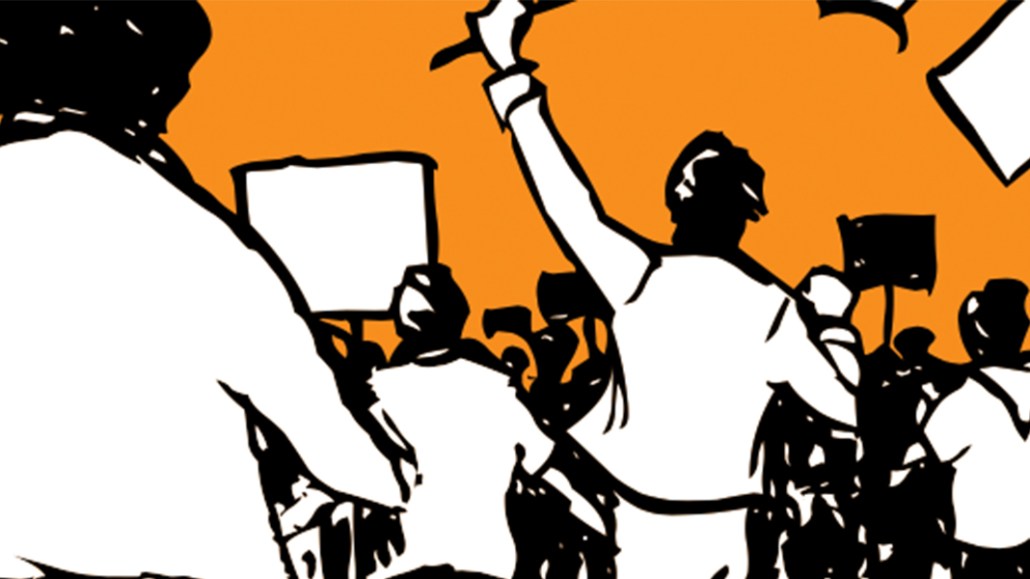‘Over-inflating their importance’: Why many marketers are wrong-footed on race

You are reading a weekly column about the big changes and challenges facing media and marketing leaders. Be sure to join Digiday+, our membership program, to get access to this column and all Digiday articles, research and more.
George Floyd’s death and the subsequent events that followed have plunged many advertisers back into a crisis mode that followed a similar playbook to the early stages of the coronavirus crisis. Yet many advertisers didn’t learn from the mistakes made last time.
Advertisers have been rightly criticized for displaying platitudes on their social media pages, without reinforcing their “solidarity” messaging with any helpful action or support. The deepest ire was reserved for hypocritical companies that have a questionable record on issues regarding race and equality, or that lack of diverse representation in their executives teams.
Advertising industry events and awards shows are awash with “purpose marketing” case studies. But in reality it’s a catch-all buzzword that’s difficult to define, and even trickier to forcibly execute.
So many marketers now believe that part of their role is for their brand to become part of a social dialog or debate — even when it has nothing to do with them, Daniel Knapp, the IAB’s chief economist told me.
“Brands were looking for purpose,” Knapp said. But “they were over-inflating their own importance.”
That’s not to say companies aren’t important in advancing equality. Companies can be extremely helpful in supporting social justice organizations financially. Companies can recruit a diverse workforce, from the board to entry-level positions and actively contribute their employees’ career development. Companies can have sometimes difficult but always necessary conversations with their staff, customers, partners and communities about how they have conducted business in the past and how they plan to improve in the future. And companies can choose to make themselves accountable for those pledges — preferably by an independent auditor — to ensure their vocal support of the black community now doesn’t lose volume over time.
Purpose marketing missteps aren’t just confined to when companies clumsily attempt to insert themselves into the cultural zeitgeist. They can also happen when advertisers anxiously seek to remove themselves from the conversation, too.
While 90% of brand safety tech vendor Cheq’s clients had requested some form of tightening of restrictions for stories related to the Floyd protests, an early poll of GroupM clients found that close to 60% of those surveyed had actively chosen not to blanket-block news related to the unrest, though some were discussing whether to pause campaigns. But that still meant 40% of the poll had sought to avoid appearing in news articles covering a huge story that is having a profound impact on society.
Will consumers really punish brands that have chosen to continue their ad campaigns without editing their message to reflect the current circumstances? As one newspaper executive put it to me (with the obvious caveats of airline ads appearing next to plane crashes aside) : “What evidence really exists that being next to news has a detrimental impact on a brand?”
If anything, one simple step marketers can take to be the change they want to see in the world at this moment is to actively spend money on the publications and platforms that are elevating the stories of black communities.
But yet: “You can pretty much guarantee every black publication has been blocked,” by advertisers with overzealous content block lists, said Christopher Kenna, CEO of diversity focused media network Brand Advance. A report from Vice Media published in 2018 found terms such as “Asian,” “gay,” “black” and “interracial” appeared higher on many brands’ keyword block lists than words such as “death,” “gun,” “heroin” and “rape”.
Dino Myers-Lamptey, founder of marketing consultancy The Barber Shop, noted that some advertisers missed the mark in their communications by broadcasting bland messages that didn’t convey the emotion of the issue. That could be a symptom of marketing and agency teams consisting of people who are removed from the audiences who are most affected by what’s going on, or teams that claim to have good representation but only certain people’s voices get to be heard.
While many consumer brands have a relevant role to play in the conversations surrounding the current crisis, we don’t need to hear from the potato chips Twitter account right now. But people — customers, employees, shareholders — are often interested in hearing what corporations plan to do.
“I don’t see this as a marketer’s messaging going, ‘we are this’ and designing something up,” said Myers-Lamptey. “Those things have usually got an annoying hidden sell in them. Ultimately they’re doing it to generate more sales to make people like them more. That’s the insensitivity. [The message] should be coming from the leader.”
This pivotal moment serves as a reminder that companies need to get their own houses in order first before attempting to take a stand publicly. Listening is usually more powerful than tweeting.
More in Media

Publishers are hunting for AI prompt data — now they’re starting to get it from third-party companies
Publishers are finally gaining some visibility into AI search, as new prompt data tools crack open a black box.

Digiday+ Research: Publishers’ growing focus on video doesn’t translate to social platforms
Major publishers have made recent investments in vertical video, but that shift is not carrying over to social media platforms.

Technology x humanity: A conversation with Dayforce’s Amy Capellanti-Wolf
Capellanti-Wolf shared insight on everything from navigating AI adoption and combating burnout to rethinking talent strategies.







